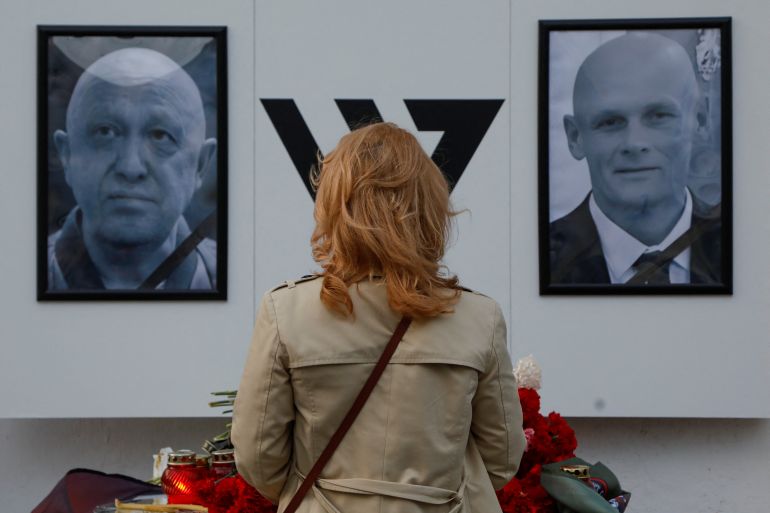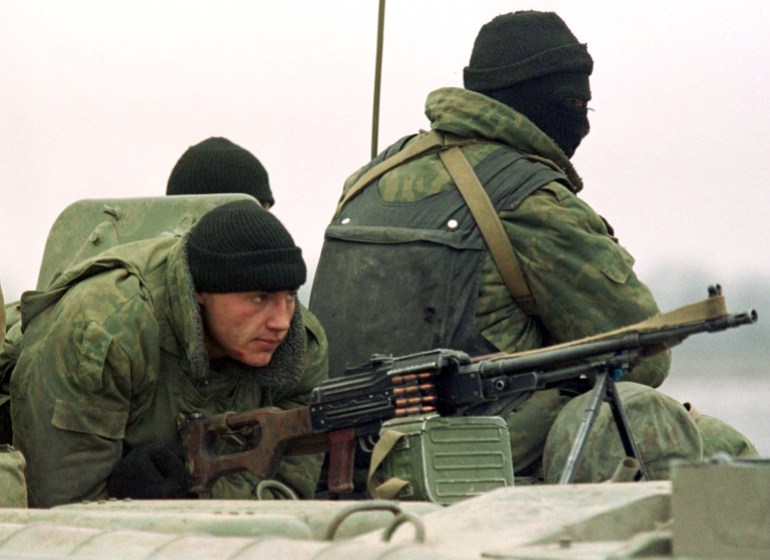Who was Dmitry Utkin, a key Wagner mercenary who died alongside Prigozhin?
The secretive war-hardened career-officer-turned-mercenary is said to have given the Wagner group its name.

Dmitry Utkin, a shadowy figure whose call sign “Wagner” allegedly inspired the Russian private mercenary group’s name, died alongside Yevgeny Prigozhin in a plane crash on Wednesday.
Utkin, who served in the Russian military intelligence, is often cited as the founder of Wagner Group, but many analysts now say that rumour was simply a smokescreen for Prigozhin, who only recently acknowledged his leading role in the armed group.
Keep reading
list of 4 itemsCharismatic leader is gone but Wagner will survive in Africa, analysts say
Russia confirms death of Wagner chief after genetic tests
Russia confirms Wagner boss Yevgeny Prigozhin’s death in plane crash
So, who really was the 53-year-old veteran on board the doomed private jet that fell from the sky between Moscow and St Petersburg?
Here is what you need to know:
Utkin’s path from career officer to mercenary
Born on June 11, 1970 in Asbest, a town nestled on the slopes of the Ural Mountains and named after its local Asbestos industry, Utkin appears to have joined the military at the age of 18.
He served in the Spetsnaz GRU, Russia’s military intelligence division, between 1988 and 2008, according to his online CV unearthed by the investigative website Bellingcat.
As a lieutenant colonel, he served in Russia’s two wars in Chechnya between 1994-2000.

The time at which he left the military remains unclear, but in 2013, he appears to have been employed by a mysterious Hong-Kong-based private military company (PMC) called the Slavonic Corps.
The only known deployment of the PMC was in Syria, where they reportedly lost a battle with the fighters linked to al-Qaeda armed group.
The birth of Wagner
The Wagner Group first appeared in 2014 when Russia sent troops into Ukraine’s Crimean Peninsula, annexing the territory and began supporting separatist rebels in the east of the country.
The group itself is believed to have been named after Utkin’s call sign Wagner, a reference to Richard Wagner, the favourite composer of German Nazi leader Adolf Hitler.
It remains unclear how involved Utkin was in forming the group, but it has been proven that Utkin played a key role in the war in Ukraine’s Donbas region and is even reported to have been injured in the fighting.
His role in the war was later confirmed by Ukrainian signal intelligence, which intercepted phone conversations between him and GRU Colonel Oleg Ivannikov, as well as to Major-General Evgeny Nikiforov, head of Russia’s 58th Army.
Between 2015 and 2022, various sources show that Utkin was active in Syria and on the African continent with Wagner.
A BBC investigation in 2021 linked him to documents that revealed Wagner’s involvement in the Libyan civil war.
He has also been accused of issuing the order to beat a Wagner defector to death and to film the act in Homs, Syria.
In 2016, he was decorated with the Order for Courage for his services in Ukraine by Russian President Vladimir Putin at the Kremlin.
In 2022, after Russia launched its full-scale invasion of Ukraine, Utkin appears to have participated in the long and bloody battle for Bakhmut. However, some reports suggest that he remained focused on the group’s activities in Africa and Syria.
Was Utkin involved in the Wagner mutiny?
Unlike Prigozhin, who appeared to relish the limelight, Utkin remained a secretive and elusive character during his time with Wagner.
How involved he was in the mutinous march on Moscow in July remains unclear, but reports suggest he may have led one of Wagner’s columns.
He certainly appears to have remained loyal to Prigozhin and the group until the very end of his life.
In a video posted on a Wagner-linked Telegram channel not long after the group were banished to Belarus, Utkin and Prigozhin can be seen jointly addressing a group of fighters.
In it, a voice resembling Utkin’s was heard to say: “This isn’t the end; it’s just the beginning of the biggest job in the world, which will be carried out very soon,” before adding in English, “Welcome to hell”.
Was Utkin a Nazi?
Utkin was certainly a Nazi sympathiser.
One of the few available photos of Utkin is a selfie which shows tattoos of a Nazi eagle and a Schutzstaffel (SS) symbol on his body.
Bellingcat describes him as having an “obsessive fascination” with the history of the Third Reich.
The Wagner Group has long been mired with accusations of Nazi sympathisers among its ranks and has been accused of spray painting swastikas and SS symbols.
The head of the DNR, Denis Pushilin, awarding a medal to Lieutenant Colonel Timur Kurilkin for "destroying 250 Nazis" – which is ironic, considering Kurilkin has two neo-Nazi patches clearly visible on his uniform. pic.twitter.com/JPXzkzts04
— Jimmy Rushton (@JimmySecUK) April 4, 2022
In Ukraine in April 2022, a leader of Rusich, a Wagner subsidiary, was video-taped wearing the Valknot and Tatenkoph of the 3rd SS Panzer Division.
On Friday, Yan Petrovsky, a Russian national who fought with Rusich, was arrested in Finland.